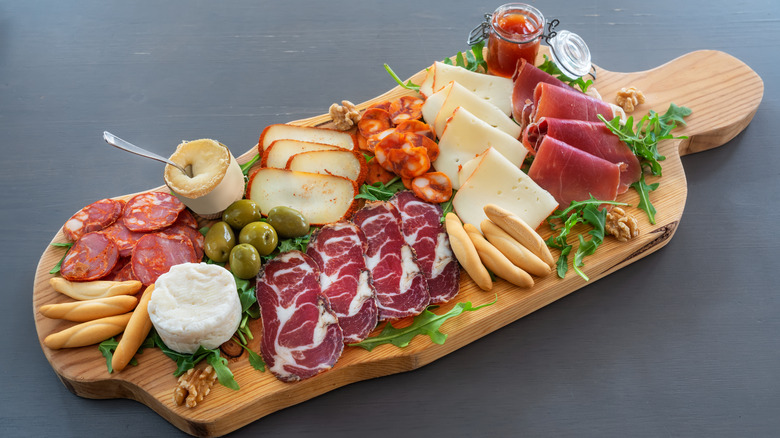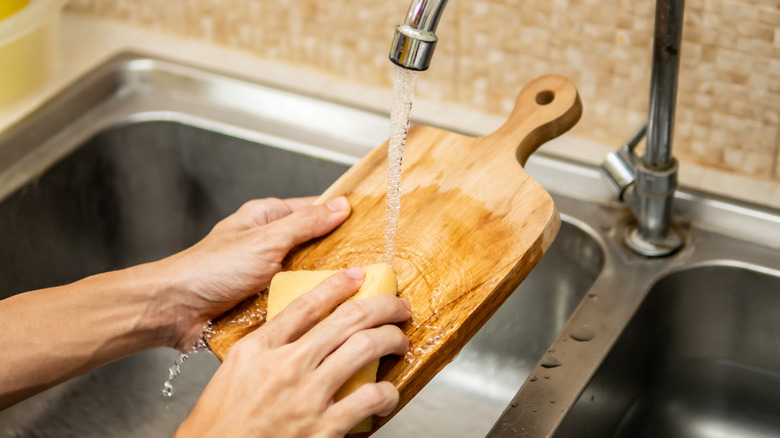Why You Should Use Two Cutting Boards For Your Charcuterie
What could make a better appetizer or party dish than a delicious charcuterie board? The tasty combination of cured meats, sliced cheeses, fancy crackers, yummy fruits, and jam is sure to have something to please everyone. And the best part is they are not all that complicated to make. Making a great charcuterie board doesn't require any complicated simmering, sauteing, or really much cooking at all; simply pick your favorite ingredients, slice them up, arrange them nicely on your best wooden board, and voila — the perfect hors d'oeuvre.
However, just because it is relatively simple doesn't mean there isn't a right and wrong way to prepare the snack. There are still some important tips to follow if you want to build the perfect charcuterie board. Picky Palate recommends using a minimum of three different types of cheeses — preferably the fancier kind, although they are more expensive — along with high quality, cured deli meats and a wide variety of flavored crackers. The outlet advises using a combination of fresh and dried fruits, nuts, olives, and pickles to fill out the center of the board, and sprinkling fresh herbs throughout for an extra pleasing pop of color and flavor. Finally, little dipping jars of honey or ham can add a touch of sweetness for the perfect finishing touch. But should you always just be using one board?
Meat can contaminate the other ingredients
While these are all great tricks to ensure your charcuterie board is tastefully curated and artfully laid out, there is one other essential element that can't be forgotten when it comes to making a charcuterie board: food safety. Whenever you are preparing meats alongside ready-to-eat snacks, it is important to ensure that there is no cross-contamination that can cause illnesses such as food poisoning, per Eat Right.
Therefore, if your charcuterie board creation involves raw meat, it is a good idea to use two separate charcuterie boards: one that may come in contact with the raw meat or juices, and another that is completely separate for cheeses, fruits, salads, and any other food that will be eaten raw. Of course, any cutting board that has come into contact with raw meat in any way should be washed thoroughly to get rid of any lingering bacteria. After it has been used for meat, the board should be cleaned with soap and water and then sanitized using a diluted liquid chlorine bleach solution. After all, there's one right way to clean your cutting or charcuterie board.
Wooden charcuterie boards that have been used to serve cheese, fruit, and other non-meat items should be rinsed with warm water and detergent and allowed to dry thoroughly before storing, per Boska.

